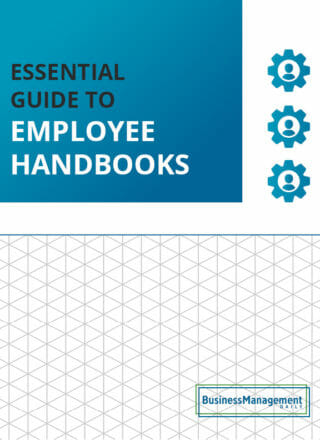How to determine if a past employee is rehireable
In August 2021, Jack moved from New Jersey to North Carolina. His elderly grandmother—with whom he always had a particularly close relationship—continued to experience health problems, and Jack wanted to be there to help out and spend time with her.
Moving, though, meant leaving his current job. During the exit interview, he gave two weeks’ notice and explained his reasons for leaving. On his last day, the human resources representative wished him well.
Jack found a new job in North Carolina, but he did not enjoy it as much as the one he left. After his grandmother passed in October 2023, Jack did some soul-searching. He decided he wanted to return to New Jersey and his previous employer if the company wanted him back.
He contacted his former employer and learned the organization had some openings. Since Jack had left on good terms, the hiring manager encouraged him to apply. Jack went through an abbreviated version of the hiring process and got rehired.
Hire me again, please
In many other situations, former employees decide they would like to return to a previous job. For instance, a parent who left to raise children re-enters the workforce. A new gig fails to live up to expectations.
Health problems clear up. Retirement proves boring or financially taxing. The employer develops a better reputation or moves in exciting new directions.
When former employees call, the potential employer may not want the person back. Factors such as company openings (and the number of other job seekers expressing interest) and the ex-employee’s past performance undoubtedly play a role. But before exploring whether you want the person back on staff, you need to determine the person’s eligibility even to be considered for rehiring.
“Hireable” vs. “no-rehire” status
Like Santa considering who is naughty or nice, circumstances surrounding the original departure determine who earns a place on the “rehire list.” (Some organizations even stamp the ex-employee’s file with “rehireable” or “not rehireable.”)
Let’s look at some common scenarios in detail:
Failed to give notice
Common business courtesy dictates that someone leaving an organization provides two weeks of notice before departure. This period gives you time to redistribute workloads. It lets you tie up loose ends.
It also gives you a head start on finding a replacement. This time allows for other important actions. These actions help maintain productivity after the vacancy.
In some places, this act is considered more than just showing professionalism—it is part of company policy. People who quit without following this protocol risk burning bridges and jeopardizing their chances of returning in the future.
Many employee handbooks specifically state that failure to give proper notice bars the individual from ever working for the company again in any capacity. Taking someone back is not an option due to this non-rehireable status.
Fired
Again, some company policies prohibit hiring back anyone whom the organization fired. Other places may judge individually or on the specific offense that led to dismissal.
Misconduct charges such as stealing, lying, harassing, bullying, or sharing confidential information are often among the things that merit automatic non-rehireable status.
Hiring managers may have some leeway in other situations. Someone let go for underperformance in one department may have skills that prove a good match for a different job at the company at a later date.
Or, a “nice young man” who lost his job originally because of professionalism issues such as tardiness, dress code violations, and too much time on social media might make a case in later years that he matured.
While the door to rehiring might not be completely nailed shut, such instances merit caution. In-depth conversations with former managers can shed greater light on what went on and what issues should be addressed upfront if choosing to interview.
Laid off
Employees sometimes get dismissed through no fault of their own. Companies downsize for financial reasons. Mergers make some positions redundant. Technology renders some roles no longer necessary.
Barring other reasons, workers who left because of layoffs are typically deemed “rehireable.” The skills and experience acquired since working for your company last may make their candidacy particularly attractive.
Left voluntarily in good standing
Many acceptably-performing employees leave jobs of their own accord and give sufficient notice. Like Jack in the opening, they may depart for personal reasons.
Or, they may desire greater pay, a higher position, new challenges, a different company culture, or a better work-life balance. If their resume ends up in your hands during a later job search, consider them “rehireable.”
Understanding the term
Whether or not someone is rehireable is just the first consideration when facing the possibility of returning a former employee. The answer simply presents options. “Rehireable” translates to “yes, you can ponder the possibility.” “Non-rehireable” means “no, not eligible, so don’t bother going any further.”
What “rehireable” does not mean is that the company must put the person back on staff. Instead, businesses must look at their needs and evaluate them appropriately. You may be thrilled at the thought of regaining a proven superstar.
Or, your organization’s vision may have changed a lot since the person last worked here. Her skills may no longer seem useful.
If interest exists, what steps should be taken following the merits consideration? Some places may want the person to reapply like a new applicant. They may judge them alongside other job seekers. Others may fast-track someone for employment after just holding a discussion.
Lastly, think about these two bits of food for thought before rehiring anyone.
-
Do a background check. You do not know what may have gone on after leaving your organization. Better safe than sorry. Dealing with someone who left just days or weeks ago? All the more reason. The other job may fall through because of something the new employer discovered during a background check.
-
Lay out precisely what rehiring means. Will the responsibilities be the same? Is there a probationary period? How are things like seniority, vacation time, and benefits eligibility handled? Does the onboarding process need repeating? The returning employee may be expected to resume like she always stayed, but the company may have other ideas. Everyone needs to be on the same page.
More Resources:
9 questions to ask before you rehire an employee

New hire paperwork checklist to keep you on track
Unethical workplace behavior: A guide in workplace ethics and integrity






